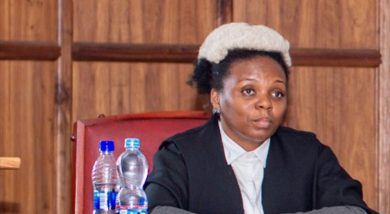Phone surveys help reach hungry people
One of the biggest challenges for the humanitarian community when disaster strikes is we need to know who has been affected, what is happening, and what people need. And we need to know fast.
Information is critical to the design and implementation of life-saving operations. Yet all too often we struggle to collect these facts consistently because we cannot communicate with people in a difficult-to-reach area.
People in no-go areas, including parts of Syria, Iraq, Somalia, South Sudan and the northern Sahel, are not just suffering, they are suffering in silence.
We believe that technological innovation has the power to fill in these blank areas. Thanks to a broad-based boom in mobile phone ownership – up by almost 20% annually in sub-Saharan Africa – mobile surveys are poised to transform how we gather information.
The UN’s World Food Programme (WFP) has long provided information to the humanitarian community through its vulnerability analysis and mapping (Vam) service. In 2013, WFP launched the mobile Vam (mVam) initiative. With a grant from the Humanitarian Innovation Fund, mVam collects food security data by calling or texting people who may be affected. They are called on the basic phones they own; no expensive data plans or smartphones are required.
In the Democratic Republic of the Congo (DRC), for example, Agnes Niyanzira was keen to cooperate with our monthly telephone surveys, answering our questions about what she and her six children had been eating.
The mVam initiative has grown rapidly: it is now in place in 15 countries, with plans to expand to 30.
Mobile surveys are cheap and fast and help us to better understand what people need. Our nationwide surveys in Malawi are completed in less than 24 hours; a task that would have taken weeks.
These surveys help us to make decisions about resource allocation. In Iraq, people can tell us in real time what is happening in the besieged cities of Anbar, so we can prioritise getting food to those who need it most, whenever possible. Blank areas on the map are now coloured in with the data and stories we hear directly from the people themselves.
Of course, new technology brings challenges. The poorest people often have limited phone access and the participation of women is sometimes curtailed, especially in the Middle East. Operators may switch off networks in places hit by conflict. Field offices sometimes struggle to manage the large streams of data produced by mobile surveys. The privacy and protection of respondents is a constant concern that has led us to modify our procedures significantly, for example, by upgrading our data storage systems and curating data to remove anything that might identify an individual.
Mobile surveys are the tip of the iceberg. Advances in aerial imagery and crowd sourced data collection are also helping humanitarians monitor dangerous or remote areas. The growth of messaging apps and the expansion of free 3G services such as Facebook Zero will increase our ability to interact with communities in crisis. In future, there will be more data and greater challenges in managing it responsibly. We must establish the right processes now.
So, what’s the best way forward? We must engage more meaningfully with the private sector. Network operators could help by allowing local roaming and providing free SIM cards in a crisis. Messaging apps should allow humanitarian agencies to build on their proprietary systems. This would allow agencies to seamlessly connect with people, no matter what app they use. Finally, we need sufficient resources to respond to people.
Ultimately, humanitarian agencies must embrace change, and invest to make responsible data collection a reality in the field, through more secure systems and heightened staff awareness. This would truly put an end to the silence.





